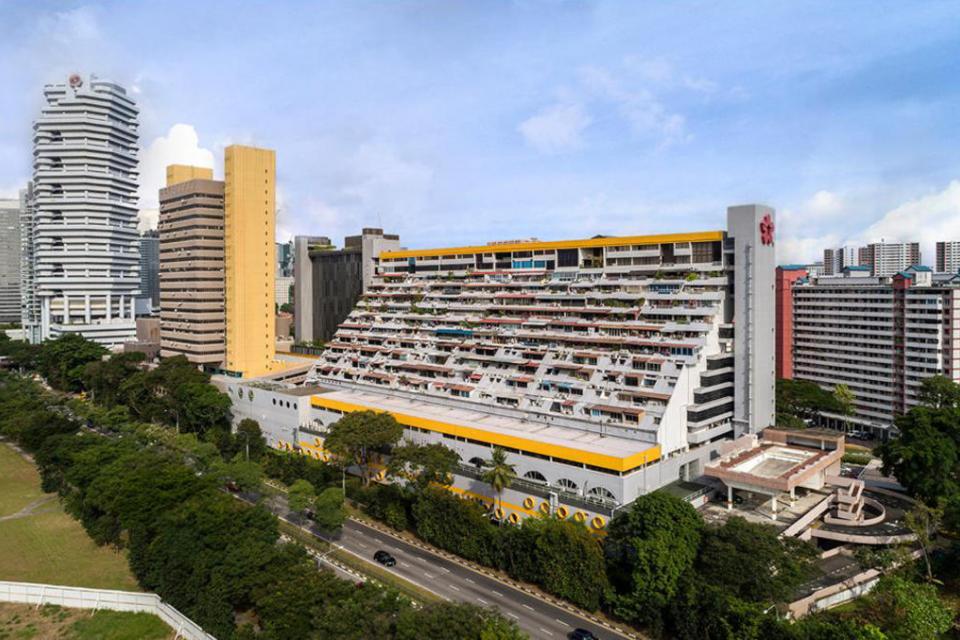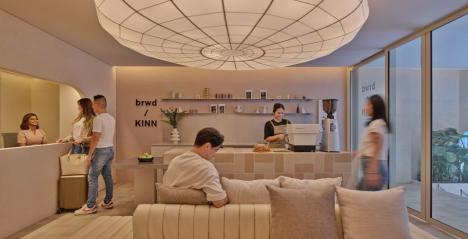Good news indeed. The iconic Golden Mile Complex will be proposed for conservation in view of its "historical and architectural significance" by the Urban Redevelopment Authority (URA).
Formerly known as Woh Hup Complex, The Golden Mile Complex 16-storey building was designed as a module in an idealistic vision for the urban development of Kallang basin in the form of a megastructure. Drawing influence from the “Linear City” proposals by renowned architects Le Corbusier and Arturo Soria y Mata, it was designed to be serviced by a nearby Mass Rapid Transit Line and pedestrian spine running parallel to Beach Road.
The Golden Mile Complex development was the result of the Urban Renewal Department (part of HDB) first Sales of Sites programme in 1967. “Golden Mile" actually refers to the strip of land between Nicoll Highway and Beach Road. The complex was planned by the government as a high-rise spine fronting the Kallang Basin.
Built at a cost of S$18 million and completed in 1973, the 16-storey Golden Mile Complex is one of the early pioneers of integrating multiple operations into a single mixed use development. In this pioneering mixed use development (incorporating offices, shopping, entertainment and apartment living), proximities between live, work and play were significantly reduced.
To accommodate the various functions, the building took on the form of highly articulated steps atop a podium, with the podium containing most of the public spaces while the terraces accommodated the apartment units, replete with generous balconies and a panoramic view of the sea and sky.
The building was designed by Gan Eng Oon, William Lim and Tay Kheng Soon of the Singapore architect firm Design Partnership, now known as DP Architects. Built to a height of 89 metres, the Golden Mile Complex is an exemplary type of megastructure described by architectural historian Reyner Banham. What makes this building unique is that it is one of the few that have been actually realised in the world.
Pritzker Architecture Prize laureate Fumihiko Maki had called the Golden Mile Complex a "collective form". It successfully propagates high-density usage and diversity under a broad range of ideas advanced by the Japanese Metabolist Movement of the 1960s. The complex was designed as a "vertical city", which stands in contrast to homogenised cities where functional zoning restrains all signs of the latter's vitality.
Conceived as a prototype for a lively environment, the design of the Golden Mile Complex was intended to catalyse urban development along Beach Road by employing an extruded section that would stretch along the East Coast facing the sea. The stepped profile of the Golden Mile Complex offers the occupants of the apartments on the upper floors a panoramic view of the sea and sky.
All the apartments have balconies, and two-storey maisonette penthouses crown off the building. The narrowness of this sloping slab form enhances natural ventilation and shades a lofty communal concourse above the podium along Beach Road. The stepped design also reduces the impact of noise from the road traffic. The Golden Mile Complex preceded by several years avant-grade stepped-section buildings which were built in the United Kingdom and Europe. The lower floors contain offices and a retail mall located within staggered atria to allow natural light into the heart of the building.
Have you taken your Golden Mile step yet ? Image Credit: Today Online











